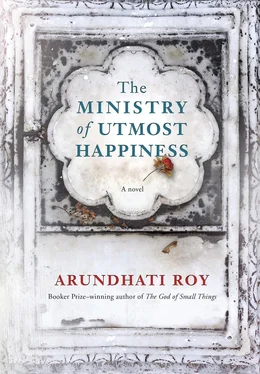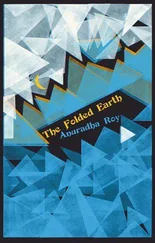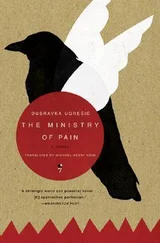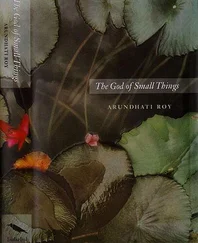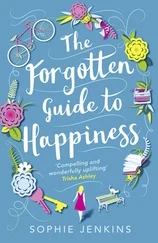— JAMES BALDWIN
9. The Untimely Death Of Miss Jebeen The First
Ever since she was old enough to insist, she had insisted on being called Miss Jebeen. It was the only name she would answer to. Everyone had to call her that, her parents, her grandparents, the neighbors too. She was a precocious devotee of the “Miss” fetish that gripped the Kashmir Valley in the early years of the insurrection. All of a sudden, fashionable young ladies, especially in the towns, insisted on being addressed as “Miss.” Miss Momin, Miss Ghazala, Miss Farhana. It was only one of the many fetishes of the times. In those blood-dimmed years, for reasons nobody fully understood, people became what can only be described as fetish-prone. Other than the “Miss” fetish, there was a nurse fetish, a PT (Physical Training) instructor fetish and a roller-skating fetish. So, in addition to checkposts, bunkers, weapons, grenades, landmines, Casspirs, concertina wire, soldiers, insurgents, counter-insurgents, spies, special operatives, double agents, triple agents and suitcases of cash from the Agencies on both sides of the border, the Valley was also awash with nurses, PT instructors and roller-skaters. And of course Misses.
Among them Miss Jebeen, who didn’t live long enough to become a nurse, nor even a roller-skater.
In the Mazar-e-Shohadda, the Martyrs’ Graveyard, where she was first buried, the cast-iron signboard that arched over the main gate said (in two languages): We Gave Our Todays for Your Tomorrows . It’s corroded now, the green paint faded, the delicate calligraphy flecked with pinholes of light. Still, there it is, after all these years, silhouetted like a swatch of stiff lace against the sapphire sky and the snowy, saw-toothed mountains.
There it still is.
Miss Jebeen was not a member of the Committee that decided what should be written on the signboard. But she was in no position to argue with its decision. Also, Miss Jebeen hadn’t notched up very many Todays to trade in for Tomorrows, but then the algebra of infinite justice was never so rude. In this way, without being consulted on the matter, she became one of the Movement’s youngest martyrs. She was buried right next to her mother, Begum Arifa Yeswi. Mother and daughter died by the same bullet. It entered Miss Jebeen’s head through her left temple and came to rest in her mother’s heart. In the last photograph of her, the bullet wound looked like a cheerful summer rose arranged just above her left ear. A few petals had fallen on her kaffan , the white shroud she was wrapped in before she was laid to rest.
Miss Jebeen and her mother were buried along with fifteen others, taking the toll of their massacre to seventeen.
At the time of their funeral the Mazar-e-Shohadda was still fairly new, but was already getting crowded. However, the Intizamiya Committee, the Organizing Committee, had its ear to the ground from the very beginning of the insurrection and had a realistic idea of things to come. It planned the layout of the graves carefully, making ordered, efficient use of the available space. Everyone understood how important it was to bury martyrs’ bodies in collective burial grounds and not leave them scattered (in their thousands), like birdfeed, up in the mountains, or in the forests around the army camps and torture centers that had mushroomed across the Valley. When the fighting began and the Occupation tightened its grip, for ordinary people the consolidation of their dead became, in itself, an act of defiance.
The first to be laid to rest in the graveyard was a gumnaam shaheed , an anonymous martyr, whose coffin was brought out at midnight. He was buried in the graveyard-which-wasn’t-yet-a-graveyard with full rites and honors before a solemn knot of mourners. The next morning, while candles were lit and fresh rose petals scattered on the fresh grave, and fresh prayers were said in the presence of thousands of people who had gathered following the post-Friday-prayer announcements in the mosques, the Committee began the business of fencing off a large swathe of land the size of a small meadow. A few days later the sign went up: Mazar-e-Shohadda.
Rumor had it that the unidentified martyr who was buried that night — the founder-corpse — was not a corpse at all, but an empty duffel bag. Years later, the (alleged) mastermind of this (alleged) plan was questioned by a young sang-baaz , a rock-thrower, a member of the new generation of freedom fighters, who had heard this story and was troubled by it: “But jenaab, jenaab , does this not mean that our Movement, our tehreek , is based on a lie?” The grizzled mastermind’s (alleged) reply was, “This is the trouble with you youngsters, you have absolutely no idea how wars are fought.”
Many of course maintained that the rumor about the martyr-bag was just another of those endless rumors generated and disseminated by the Rumours Wing in Badami Bagh, Military HQ, Srinagar; just another ploy by the occupation forces to undermine the tehreek and keep people destabilized, suspicious and racked by self-doubt.
Rumor had it that there really was a Rumours Wing with an officer of the rank of Major in charge of it. There was a rumor that a dreaded battalion from Nagaland (themselves subjects of another occupation in the east), legendary eaters of pigs and dogs, occasionally enjoyed a snack of human flesh as well, especially the meat of “oldies,” those in the know said. There was a rumor that anybody who could deliver (to somebody, address unknown) an owl in good health that weighed three or more kilos (owls in the region weighed only half that, even the fat ones) would win a million-rupee prize. People took to snaring hawks, falcons, small owls and raptors of all kinds, feeding them rats, rice and raisins, injecting them with steroids and weighing them on the hour, every hour, even though they were not quite sure whom to deliver the birds to. Cynics said it was the army again, always looking for ways to keep gullible people busy and out of trouble. There were rumors and counter-rumors. There were rumors that might have been true, and truths that ought to have been just rumors. For instance, it really was true that for many years the army’s Human Rights Cell was headed by a Lieutenant Colonel Stalin — a friendly fellow from Kerala, son of an old communist. (The rumor was that it was his idea to set up Muskaan — which means “smile” in Urdu — a chain of military “Good Will” centers for the rehabilitation of widows, half-widows, orphans and half-orphans. Infuriated people, who accused the army of creating the supply of orphans and widows, regularly burned down the “Good Will” orphanages and sewing-centers. They were always rebuilt, bigger, better, plusher, friendlier.)
In the matter of the Martyrs’ Graveyard, however, the question of whether the first grave contained a bag or a body turned out to be of no real consequence. The substantive truth was that a relatively new graveyard was filling up, with real bodies, at an alarming pace.
—
Martyrdom stole into the Kashmir Valley from across the Line of Control, through moonlit mountain passes manned by soldiers. Night after night it walked on narrow, stony paths wrapped like thread around blue cliffs of ice, across vast glaciers and high meadows of waist-deep snow. It trudged past young boys shot down in snowdrifts, their bodies arranged in eerie, frozen tableaux under the pitiless gaze of the pale moon in the cold night sky, and stars that hung so low you felt you could almost touch them.
When it arrived in the Valley it stayed close to the ground and spread through the walnut groves, the saffron fields, the apple, almond and cherry orchards like a creeping mist. It whispered words of war into the ears of doctors and engineers, students and laborers, tailors and carpenters, weavers and farmers, shepherds, cooks and bards. They listened carefully, and then put down their books and implements, their needles, their chisels, their staffs, their plows, their cleavers and their spangled clown costumes. They stilled the looms on which they had woven the most beautiful carpets and the finest, softest shawls the world had ever seen, and ran gnarled, wondering fingers over the smooth barrels of Kalashnikovs that the strangers who visited them allowed them to touch. They followed the new Pied Pipers up into the high meadows and alpine glades where training camps had been set up. Only after they had been given guns of their own, after they had curled their fingers around the trigger and felt it give, ever so slightly, after they had weighed the odds and decided it was a viable option, only then did they allow the rage and shame of the subjugation they had endured for decades, for centuries, to course through their bodies and turn the blood in their veins into smoke.
Читать дальше
